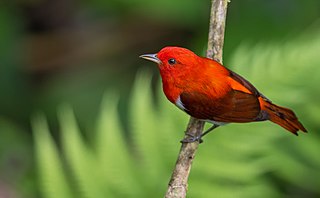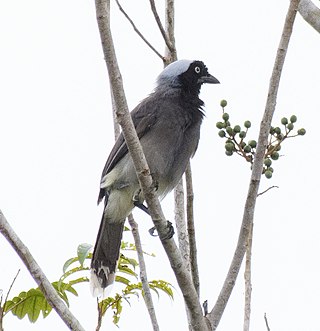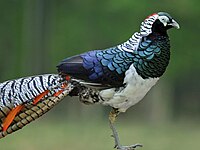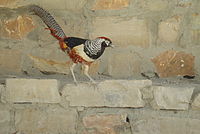
Pheasants are birds of several genera within the family Phasianidae in the order Galliformes. Although they can be found all over the world in introduced populations, the pheasant genera native range is restricted to Eurasia. The classification "pheasant" is paraphyletic, as birds referred to as pheasants are included within both the subfamilies Phasianinae and Pavoninae, and in many cases are more closely related to smaller phasianids, grouse, and turkey than to other pheasants.

The golden pheasant, also known as the Chinese pheasant, and rainbow pheasant, is a gamebird of the order Galliformes and the family Phasianidae (pheasants). The genus name is from Ancient Greek khrusolophos, "with golden crest", and pictus is Latin for "painted" from pingere, "to paint".
The British avifauna is the birds that have occurred in Great Britain. This article is a general discussion of the topic. A full species list can be found at List of birds of Great Britain.

The blood pheasant or blood partridge is the only species in genus Ithaginis of the pheasant family. It is a relatively small, short-tailed pheasant that is widespread and is fairly common in eastern Himalayas, ranging across India, Nepal, Bhutan, China, and northern Myanmar. Since the trend of the population appears to be slowly decreasing, the species has been evaluated as of least concern on the IUCN Red List in 2009.

Chrysolophus is a genus of the pheasant family of birds. The genus name is from Ancient Greek khrusolophos, "with golden crest".

The black-bellied sandgrouse is a medium large bird in the sandgrouse family.

The crested partridge also known as the crested wood partridge, roul-roul, red-crowned wood partridge, green wood quail or green wood partridge is a gamebird in the pheasant family Phasianidae of the order Galliformes, gallinaceous birds. It is the only member of the genus Rollulus.

The Himalayan monal, also called Impeyan monal and Impeyan pheasant, is a pheasant native to Himalayan forests and shrublands at elevations of 2,100–4,500 m (6,900–14,800 ft). It is part of the family Phasianidae and is listed as Least Concern on the IUCN Red List. It is the national bird of Nepal, where it is known as the danphe or danfe, and state bird of Uttarakhand, India, where it is known as monal. The scientific name commemorates Lady Mary Impey, the wife of the British chief justice of Bengal, Sir Elijah Impey.

The Palawan peacock-pheasant is a medium-sized bird in the family Phasianidae endemic to the island of Palawan in the Philippines. It is known as tandikan in the local Palawano, Tagbanwa, and Batak languages of Palawan. It is featured prominently in the culture of the indigenous people of Palawan. The bird is also depicted in the official seal of the city of Puerto Princesa.

The Temminck's tragopan is a medium-sized, approximately 64 cm long, pheasant in the genus Tragopan. The male is a stocky red-and-orange bird with white-spotted plumage, black bill and pink legs. The male's display features include bare blue facial skin, inflatable dark-blue lappet and horns. The females are a white-spotted brown with blue circular eye skin.

The copper pheasant or Soemmerring's pheasant is endemic to Japan. The scientific name commemorates the German scientist Samuel Thomas von Sömmerring.

The Bornean crested fireback is a medium-sized forest pheasant from Borneo and the Bangka Belitung Islands. It is the type species of the genus Lophura. Prior to 2023, it was referred to as simply the crested fireback as the Malayan crested fireback was lumped with this species, though both have since been split.

The eared quetzal, also known as the eared trogon, is a near passerine bird in the trogon family, Trogonidae. It is native to streamside pine-oak forests and canyons in the Sierra Madre Occidental of Mexico south to western Michoacán, and southeasternmost Arizona and New Mexico in the United States. This range includes part of the Madrean Sky Islands region of southeastern Arizona, southwestern New Mexico, and northern Sonora.

Sclater's monal also known as the crestless monal is a Himalayan pheasant. The name commemorates the British zoologist Philip Lutley Sclater.
Benjamin Leadbeater was a British naturalist, ornithologist and taxidermist.

Swinhoe's pheasant, also known as the Taiwan blue pheasant, is a bird of the pheasant subfamily in the fowl family Phasianidae. It is endemic to Taiwan. Along with the Mikado pheasant and Taiwan blue magpie, two other Taiwan endemics, Swinhoe's pheasant is sometimes considered an unofficial national symbol for Taiwan, as it bears the colours of the national flag.

The white-bellied imperial pigeon is a species of bird in the pigeon family Columbidae. First described by the French ornithologist Charles Lucien Bonaparte in 1854, it is endemic to Indonesia, where it is found on Sulawesi, Buton, Taliabu, Togian, and Peleng. It inhabits primary forest, dense secondary forest, and isolated areas of hill forest. A large pigeon with a long tail, it measures 42.5–51.5 cm (16.7–20.3 in) long and weighs 510 g (18 oz) on average. Males are mainly green, with pale-grey heads and bellies, chestnut vents, and a pale grey tail band, along with a red orbital ring. Females are nearly identical, but have darker grey areas in their plumage.

The scarlet-and-white tanager is a species of bird in the family Thraupidae. It is found in Colombia and northern Ecuador. Its natural habitats are subtropical or tropical moist lowland forests and heavily degraded former forest. The male is highly distinctive and has bright scarlet upperparts, darker red wings and undertail coverts, and white underparts with a scarlet median stripe running down the throat and belly. Females are patterned like the males, but are olive-brown instead of scarlet.

The azure-naped jay is a species of bird in the family Corvidae. It is found in Brazil, Colombia, and Venezuela.

Faunia is a zoo and a botanical garden located in Madrid, Spain. It covers about fourteen square hectares and is organized into areas representing different ecosystems, such as jungle, polar regions, and African forest. It is owned by Parques Reunidos, SA.



























